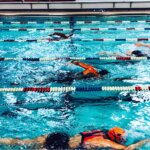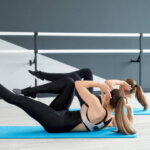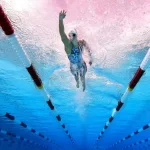Let’s say you’re at the point in your triathlon career where you’re ready to take your running speed to the next level. In previous races you may have felt like your current running speed is your top running speed and can’t imagine being able to increase it for your next triathlon. I’m here to tell you that something as simple as increasing your running cadence will help you increase your overall running speed.
What is running cadence?
Running cadence is the number of times your feet hit the ground in a given time interval.
Simply put, running at a faster cadence will help improve your running. In order to improve your cadence, you just need to shorten your stride length. It’s important to avoid overstriding, which can put more stress on joints such as knees and hips. Quicker feet = higher running cadence = less chance of stress on joints.
Take a look at these top 3 ways to improve running cadence:
1. Perfect Your Form
When you’re running, imagine a string is tied to the top of your head, keeping you as tall as possible. Slightly tuck your tailbone and engage your core. By standing tall during your run and bracing your mid section, you’re taking weight and stress off of joints such as knees and hips. As you continue your run, keep checking in on this form. It can be easy to begin hunching over as your body becomes tired. By keeping straight and solid form, you are putting less stress on your body and allowing for a more solid and quicker running cadence.
2. Move Your Arms
When you change your arm rhythm, your legs and feet will follow. Driving your elbows back with a quick, short swing will speed up your overall running cadence. When you’re trying to swing your arms faster, make sure to drive them straight backwards and keep the motion tight and compact with elbows behind your hips and your hands near your lower ribs. Avoid crossing your arms over your chest.
3. Quick Feet
The best way to improve your running cadence? Move those feet as quickly as possible. Focus on running with shorter strips and quicker steps. As you progress through your run, especially longer training runs, check in on your running form. As with any new habit, it may take a while for you to continuously move with quick feet. Once you continue training with this quick feet running technique, you will get more used to it.
Proper running technique is a key factor for you to run without injury and become a more efficient runner. When you’re trying to increase your running cadence while keeping a solid running form, focus on running with shorter, quicker steps. It might feel strange at first, but your body will adapt quickly and you’ll be moving your feet quicker than you ever have before!
Looking for more ways to improve your running speed for race day? Contact me today to set up a free coaching consultation!
Train Right, Tri Right!
Coach MJ







